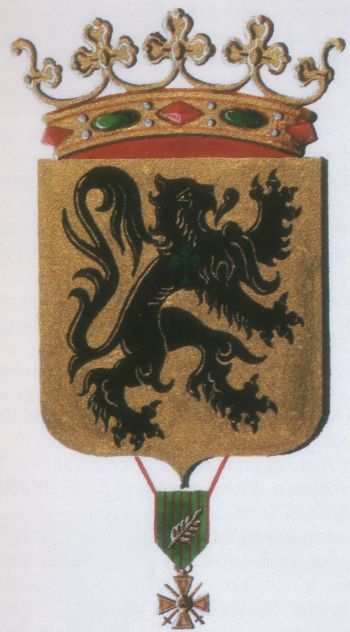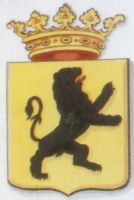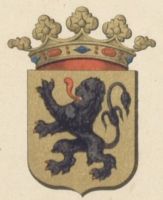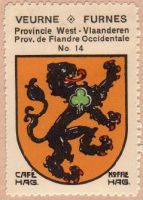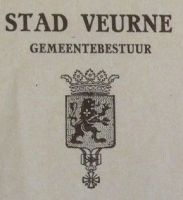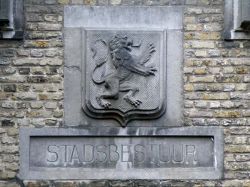Veurne: Difference between revisions
Knorrepoes (talk | contribs) |
Knorrepoes (talk | contribs) No edit summary |
||
| Line 1: | Line 1: | ||
'''VEURNE''' | '''VEURNE''' | ||
| Line 21: | Line 20: | ||
In the middle of the 16th century two versions of the arms were known; a black lion, armed red, on silver, or, as mentioned by Gaillard in 1538, a black lion on gold, with a small trefoil on its chest. Ever since the arms showed a black lion, with or without trefoil. | In the middle of the 16th century two versions of the arms were known; a black lion, armed red, on silver, or, as mentioned by Gaillard in 1538, a black lion on gold, with a small trefoil on its chest. Ever since the arms showed a black lion, with or without trefoil. | ||
In 1818 the city received the black lion and trefoil, but now with a red tongue. This was confirmed after the Belgian | In 1818 the city received the black lion and trefoil, but now with a red tongue. This was confirmed after the Belgian independence. In 1986 the red tongue was removed and the French War Medal, which the city received in 1919, was added. | ||
<gallery widths=250px heights=200px perrow=0> | <gallery widths=250px heights=200px perrow=0> | ||
Revision as of 08:21, 18 March 2023
VEURNE
Province : West-Vlaanderen
Additions : 1970 Avekapelle, Zoutenaaie; 1976 Beauvoorde (1970 Vinkem, Wulveringem), Booitshoeke, Bultskamp, Eggewaartskapelle, Houtem (1970 De Moeren), Steenkerke
Official blazon
- (1819) Van goud beladen met een zwarten klimmenden leeuw getongd van keel, gekeerd ter linker zijde van het schild hebbend eop deszelfs borst een klaverblad, het schild gedekt met een gouden kroon.
- (1838) Geel koleur, met eenen leeuw omziende van zwart koleur met tanden van zulke kleur, en tong uytsteekende, belaeden met een klaver-blad van groen koleur, het wapen gedekt met eene gouden kroon.
- (1986) In goud een omgewende leeuw van sabel met op de borst een klaverblad van sinopel. Het schild getopt met een markiezenkroon en getooid met het Frans Oorlogskruis met palm.
Origin/meaning
The arms were officially granted on December 10, 1986.
Veurne became a city at the end of the 12th century and was the centre of a large region (Kasselrij) in Vlaanderen. In 1586 the city and the kasselrij were joined under one council. The seals of Veurne showed in the 13th century a plant or flower and on the contra-seals a lion, probably the lion of Vlaanderen. Later contra-seals also showed the plant.
The seal of 1409 showed again a lion. After the merger in 1586 a new seal was used showing arms with on the first half the lion of Veurne and on the second a lion and a saltire, for the kasselrij.
In the middle of the 16th century two versions of the arms were known; a black lion, armed red, on silver, or, as mentioned by Gaillard in 1538, a black lion on gold, with a small trefoil on its chest. Ever since the arms showed a black lion, with or without trefoil.
In 1818 the city received the black lion and trefoil, but now with a red tongue. This was confirmed after the Belgian independence. In 1986 the red tongue was removed and the French War Medal, which the city received in 1919, was added.
The arms in the Koffie Hag/Café Hag albums +/- 1930
The arms on a police badge (source)
The arms in the city (source)
Literature: Servais, 1955
This page is part of the Belgium heraldry portal/ Belgische overheidswapens/ Armorial de Belgique
|
|
